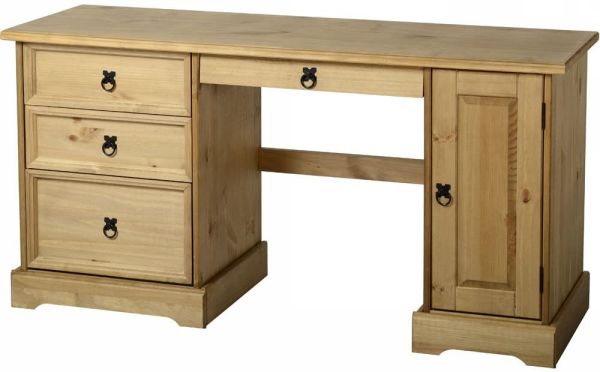DeskTop Blueprints - Correct Steps to Construct Robust Framework
If there's not enough wall space on one side of the opening, you can install a pair of doors that slide to opposite sides or buy special bypass hardware that allows doors to stack. Mark exact center of the leg blanks and use a circular saw-cutting from both sides-to rip them in half. You may have to special-order them, but added longevity is worth money and trouble. Then work wood filler into all of edge grain, nail holes and dents. Mark the biscuit positions on both adjoining boards as you would with a biscuit joiner. Transfer the angle from the sides onto ends of steps.
Electronic stud finders are the go-to tool for this task. This keeps them from drifting apart when you (find out more) clamp them. Cut along line with your jigsaw, then use a block plane to smooth cut edge. If you rout on the left side of the jig, the router would tend to wander away from the jig and you'll wind up with a run-amuck dado. If you choose a gloss finish, be aware that if you don't pay attention to filling and sanding, every single imperfection would proudly display itself. Set your glass onto the center of the base and screw the mirror clips to base, securing glass to assembly.
Flip the two boards halfway through process to reduce blowout. Plane side pieces first, working from front to back to avoid splitting the corners of front piece. Just rip a kerf in a piece of thin cardboard from a cereal box and tape it to the table. Glue the joint, then clamp and screw the assemblies together. I added clamps, applying only light pressure at first. See how to keep a damp space like a basement dry. Screw on end blocks and bend a spring stick between them. Use 1x6s to make the sides and 1x4s to make drawer guides.
Make a counterbored hole through the leg's back and into stretcher. Keep some Neosporin in your camping bag next time you head outdoors and find out the cool, new items every camper is adding. You can use this setup on any power tool with a metal table. For heavier shelves, drill recesses for timber plugs to hide screws. Run the piece through on one side, then flip it end-for-end and run it through on other side to ensure groove is centered. By doing so, you will ensure that the edges of board are square as well. Cut the plate slots for these joints using a straightedge guide.
Most of the components are craft from a single sheet of plywood. Build the walls and trellis on a big, flat work surface like your driveway. Therefore, fill pilot holes with lumber putty and smooth the surface with 120-150 grit sandpaper. Use glue along the mitered seam at top. Start by nailing board to the sawhorses with finish nails to hold it in place. We chose poplar because it's strong, readily available, and easy to work and takes paint well. Take it to chessboard and scribe other side of the board to get length of the outer rim. Also, these trays are most useful if your existing drawers have full extension slides on main drawer.
Put a charge into glue spreading with a credit card. And all of the interior work, from installing cabinets to hanging doors, was a real nightmare. I love making simple projects with free wood. The progressively larger sizes allow them to nest for storage, making them perfect for a cramped shop. This way the credit card stays flat when you bolt it on. You can build this built-in bookcase by following our clear drawings and step-by-step photos, or use these techniques to modify dimensions for your own space. Your top will withstand outdoor weather, but it's susceptible to stains. And you'll use it more often than you think.
Cut plywood base and pieces carefully to make sure they have parallel sides and square corners. Last summer, we decided to build self-watering planters that we could leave for a week without watering. Using a chamfer bit on router, add the triangle-shaped notches. Photo 1 shows how to arrange and connect two sticks that you will use to draw the arch.


